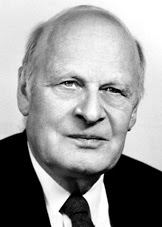Onsager's Tour de Force
In 1943 in a tour de force of mathematical physics, Lars Onsager
solved the 2D Ising
Model.
 His solution has proved crucial in furthering statistical mechanics,
allowing theorists to check all of there approximation schemes against
analytical results. I call his effort a tour de force because it was a
huge mathematical exercise, his solution spanning 33 pages. I also call
it a 'tour de force' because I have seen it referenced as such in no
less than 5 different sources, as well as numerous times in speech. This
got me wondering, just how many times is Onsager's solution called a
tour de force... So, first I started with a Google books search, and
turned up 39
Books,
among the one's that Google has indexed, which surely represent only the
tip of the iceburg. The books search turns up some of the more popular
statistical mechanics books including Kadanoff and Goldenfeld. And I
happen to know its also called a tour de force in Sethna's book and
Cardy's. Interestingly, the earliest mention in the book search is
Magnetism, Volume 2, Part 1 By George Tibor Rado, Harry
Suhl,
from 1963, 19 years after Onsager's paper. Next I used Google Scholar to
try and turn up some references in papers as well. I got 73
results,
the earliest of which I have access to is: Field theory of the
two-dimensional Ising model: Equivalence to the free particle
one-dimensional Dirac equation, Ferrell, Richard
A. In fact, making a
histogram of the appearances, it looks like the term's usage is only
increasing.
His solution has proved crucial in furthering statistical mechanics,
allowing theorists to check all of there approximation schemes against
analytical results. I call his effort a tour de force because it was a
huge mathematical exercise, his solution spanning 33 pages. I also call
it a 'tour de force' because I have seen it referenced as such in no
less than 5 different sources, as well as numerous times in speech. This
got me wondering, just how many times is Onsager's solution called a
tour de force... So, first I started with a Google books search, and
turned up 39
Books,
among the one's that Google has indexed, which surely represent only the
tip of the iceburg. The books search turns up some of the more popular
statistical mechanics books including Kadanoff and Goldenfeld. And I
happen to know its also called a tour de force in Sethna's book and
Cardy's. Interestingly, the earliest mention in the book search is
Magnetism, Volume 2, Part 1 By George Tibor Rado, Harry
Suhl,
from 1963, 19 years after Onsager's paper. Next I used Google Scholar to
try and turn up some references in papers as well. I got 73
results,
the earliest of which I have access to is: Field theory of the
two-dimensional Ising model: Equivalence to the free particle
one-dimensional Dirac equation, Ferrell, Richard
A. In fact, making a
histogram of the appearances, it looks like the term's usage is only
increasing.
 I'm not sure what's more impressive. The fact that Onsager was able to
solve the 2D Ising model, or the fact that his solution was so
impressive that it has become almost necessary to refer to it as a tour
de force. If you feel like a challenge, we're still waiting on a
solution to the 3D Ising model. It appears to be a hard problem, in fact
it looks as though its NP
Complete.
So get to work! (Note: the last document doesn't refer to Onsager's
solution by its proper name, instead calling it a breakthrough, tsk
tsk)
I'm not sure what's more impressive. The fact that Onsager was able to
solve the 2D Ising model, or the fact that his solution was so
impressive that it has become almost necessary to refer to it as a tour
de force. If you feel like a challenge, we're still waiting on a
solution to the 3D Ising model. It appears to be a hard problem, in fact
it looks as though its NP
Complete.
So get to work! (Note: the last document doesn't refer to Onsager's
solution by its proper name, instead calling it a breakthrough, tsk
tsk)
Comments
Comments powered by Disqus